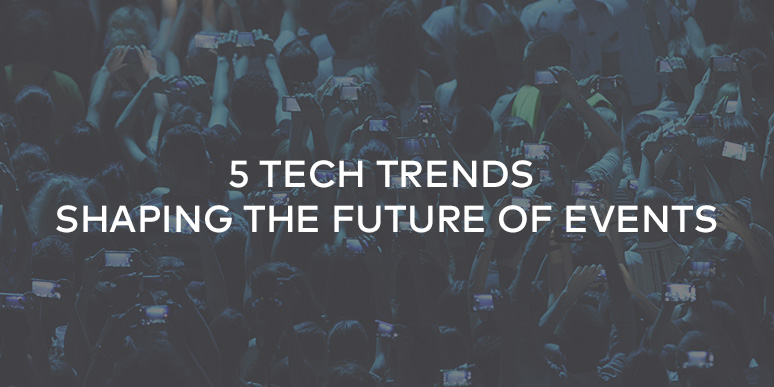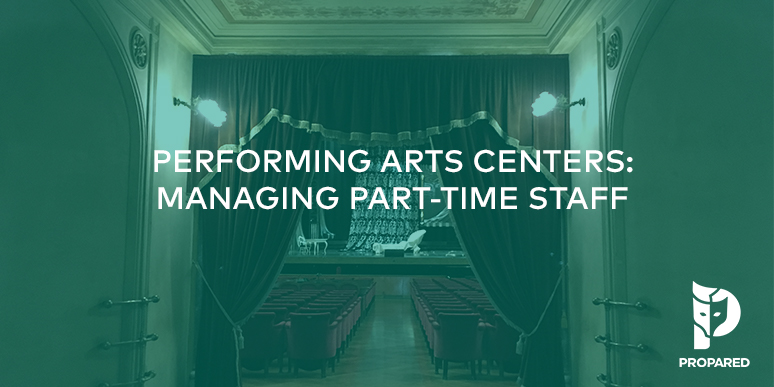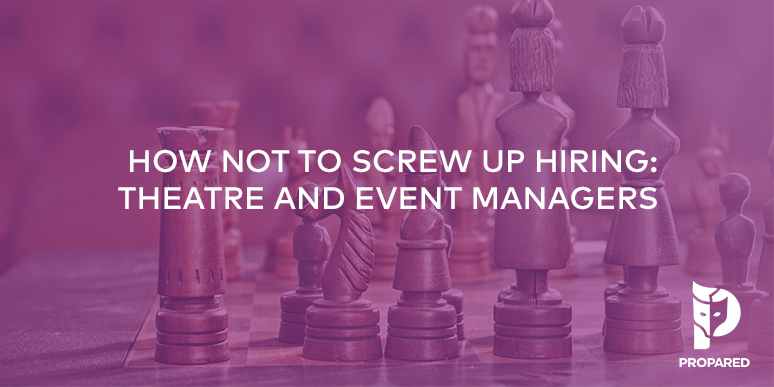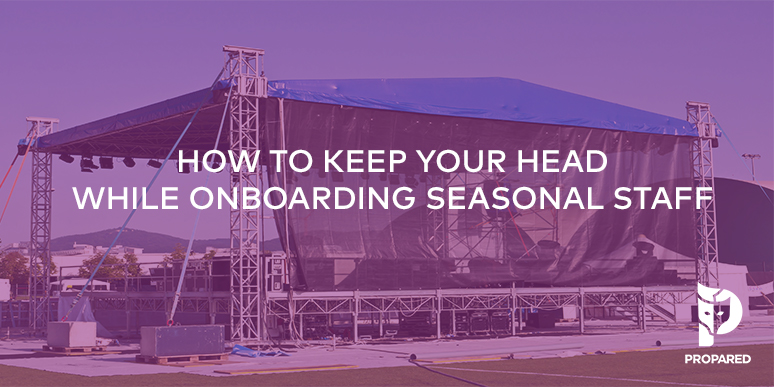
With new trends and technologies appearing seemingly every week, the event planning industry is coming to terms with a future built on change. While most in the business pride themselves on adaptability, this pace of change is not always easy to keep up with, even for the most seasoned event veteran.
This tech revolution isn’t surprising. According to the most recent statistics from the U.S. Bureau of Labor, employment of meeting, convention and event planners is expected to grow 10% from 2014 to 2024. This outstrips growth forecasts for any other occupation. A rising tide lifts all boats.
With so many events happening every day, in every corner of the world, the possibilities are exciting and nearly limitless. The challenge for the everyday event planner is staying abreast of the latest tools and using them for maximum impact. Here are 5 tech trends reshaping the industry and some quick tips on how you can integrate them into your events.
1. Big data
If it exists, it exists to be measured. So it goes in the age of big data. Nearly every action your attendees take has the potential to be measured, analyzed, and then utilized to refine how you provide service.
All this data is wonderful but it presents new challenges. Namely, data overload. According to Bernard Marr, Founder and CEO of Advanced Performance Institute, an independent consulting firm, more data has been created during the past two years than over our entire history. That’s a lot of metrics floating around. It begs the question: how do you sort “good” data from “bad” data? Or not “bad,” but how do you identify only what you need to achieve your goals and discard the rest?
Such data collection is still relatively new for event planners. The learning curve is going to have to be steep. Social signals, check-ins, status updates, session attendance, to name a few. And you are going to want to measure pre-, during, and post-event for a holistic understanding of engagement.
So how do you select the right tools? The best advice is to start small. Focus on the key goal for your event, then work backwards. What kinds of information, what questions would you like answered that can help push you closer to your goal? Here’s a few example metrics that might be of interest.
- Staffing and crew logistics
- Conversion and engagement rates for event campaigns
- Real-time event data (e.g. what are attendees most interested in?)
- Budgeting and invoicing
- Scheduling (for attendees, volunteers, event crew, etc.)
- Attendee profiles (job, company, industry, etc.)
- Social engagement
2. A custom and personalized experience
Never before have event organized been as well-positioned to provide their guests with more personalized experiences. So much so, it may come to pass that event planners begin creating smaller events, but more of them. Just by using this wealth of data, they can build more targeted audiences and produce more engaging events.
This isn’t just because event planners are pushing the tech on attendees. The attendees themselves are demanding it. According to research published by American Express Meetings & Events, 55% of attendees on average ranked various event personalization features as “very important/extremely important.” This ranged from an attendee’s ability to create a personalized schedule (64%), to being able to network and share contact information with other attendees (63%), to many more. The full report can be accessed here.
Again, it can be difficult to know where to start. So ask your attendees. Build surveys, ask for feedback. You want to give them what they want? Ask.
3. Wearable sensor technology
Wearables have been around for a surprisingly long time. Depending on your definition of “wearable technology,” you could find yourself going back several hundred years.
But for event planners, wearables represent a new frontier in personalized engagement; from bracelets and wristbands, to jackets and shirts, to iBeacons that trigger when an Apple Watch wearer walks by a designated spot. Wearables can deepen an attendee’s experience through embedded personal information (speeding up check-ins, registrations, payments, etc.), behavioral triggering (geo-location, mapping, etc.), and even simulated experiences.
While wearables may be some of the coolest products to choose from, they still have to support your overall goal. If you spend a ton of money on wearables and you get a bunch of data that is useless, your ROE (return on event) has just gone done significantly. Be smart.
4. Robots and drones
2015 gave the wider event community its first glimpse into the possibilities of drone usage. Though still in a regulatory gray area, drones are already being widely used to capture events in ways never before seen.
The adoption of telepresence robots, allows attendees to experience events virtually. Companies likeMantarobot and Double Robotics are pushing the boundaries for what it means to engage in an event. While exciting, it presents new design and accessibility challenges for planners and production managers.
And what do you think: can a robot make a great bartender? It sounds far-fetched but it’s already happening.
5. Social, Social, Social
According to the 2014 “Social Media & Events Report” published by Xing Events, 85% of event planners surveyed indicated that they intend to increase their social media activities in the future. That’s a staggering number.
And the market has responded. An event manager can select from dozens of social engagement, monitoring, and analytics apps with which to extend an event’s reach. Create live social slideshows, tweet walls, and photo and video collages. And the social media giants are getting in on the act themselves. Facebook has made significant upgrades to its events feature. Twitter added “Moments” to its top level offerings. And both of them have made significant investments into live streaming. Looking forward, it seems that if an event isn’t captured on social, it didn’t happen.
The folks at Marketing Land have put together a great list of tips for incorporating social media into your event marketing efforts.
It’s an exciting time to work in events. There’s a positive economic and employment outlook over the next decade. Event technology is stretching the creative limits of shows. And a growing social community, particularly among younger generations add up to a bright and exciting future.
26 Stars is a NYC based company specialized in creating fantastic event experiences. Find out more at www.26stars.com, or check out their blog for articles and resources for the event planning industry.



